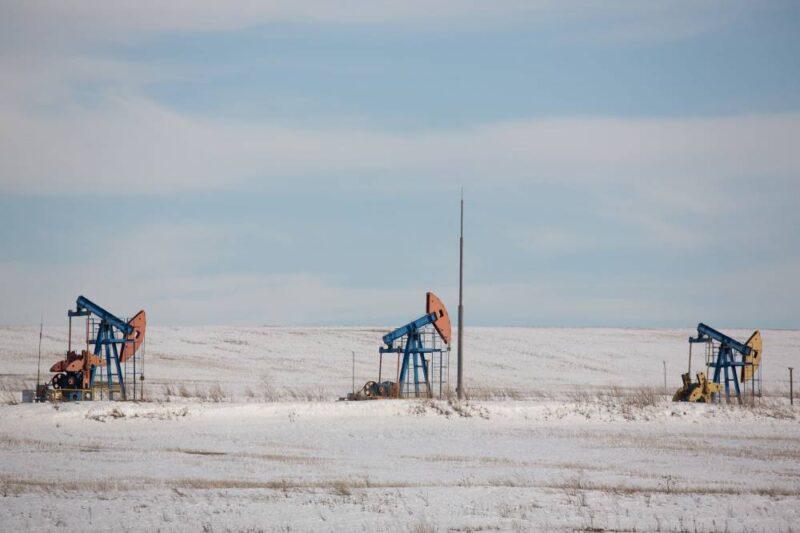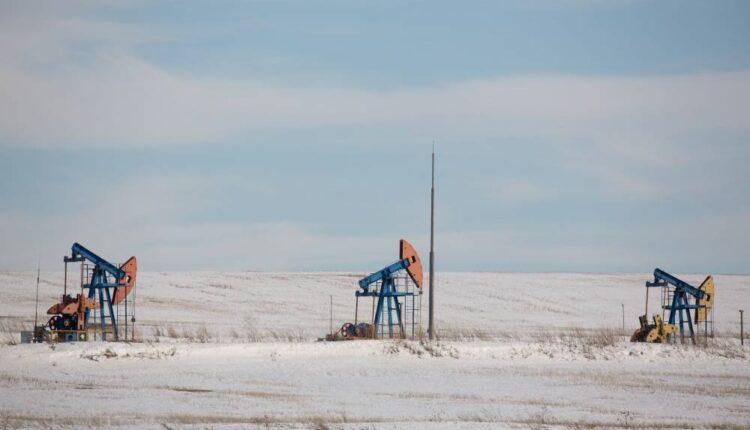
- Brent was up by 75 cents, or 2.7%, at $28.57 a barrel by 0058 GMT, while U.S. crude for May delivery, which expires on April 21, was up 1 cent, or 0.1%, at $19.88 a barrel.
Oil pumping jacks, also known as "nodding donkeys", operate in an oilfield near Almetyevsk, Tatarstan, Russia, on Wednesday, March 11, 2020.Andrey Rudakov | Bloomberg via Getty Images
Oil prices rose on Friday with Brent gaining nearly 3% after President Donald Trump laid out guidelines on reviving a U.S. economy ravaged by the coronavirus pandemic that has punched a huge hole in global demand for crude and refined products.
Brent was up by 75 cents, or 2.7%, at $28.57 a barrel by 0058 GMT, while U.S. crude for May delivery, which expires on April 21, was up 1 cent, or 0.1%, at $19.88 a barrel. The more active June contract was up $1.1, or 4.3%, at $26.63.
Trump laid out a three-stage process for ending lockdowns to stop the spread of the coronavirus that has now killed more than 32,000 Americans and nearly 140,000 worldwide, while some other countries were also relaxing restrictions.
"Oil prices are surging after President Trump issued guidelines that will see a portion of the country open a lot sooner than anyone expected," said Edward Moya, senior market analyst at OANDA in New York.
Optimism that there may be signs of an easing of the health crisis is sending stock and other riskier markets like oil higher.
Still, both oil benchmarks are heading for a second consecutive week of losses, with U.S. oil around 18-year lows: Analysts have slashed forecasts for prices and demand due to the spread of the coronavirus and oversupply concerns.
The Organization of the Petroleum Exporting Countries (OPEC) lowered its forecast for 2020 global oil demand and warned it may not be the last revision downward. OPEC now sees a contraction of global demand of 6.9 million barrels per day (bpd), compared with a small increase predicted last month, due to the coronavirus outbreak.
"Downward risks remain significant, suggesting the possibility of further adjustments, especially in the second quarter," OPEC said of the demand forecast.
OPEC and other producers including Russia, in a grouping known as OPEC+, over the weekend agreed on production cuts of nearly 10 million bpd, after an earlier cooperation agreement collapsed.
Even allowing for another 10 million bpd of cuts supposed to come from producers like the United States and Norway due to weak prices, there is still a mismatch between supply and demand of around 10 million bpd, most analysts say.
Source: cnbc.com

